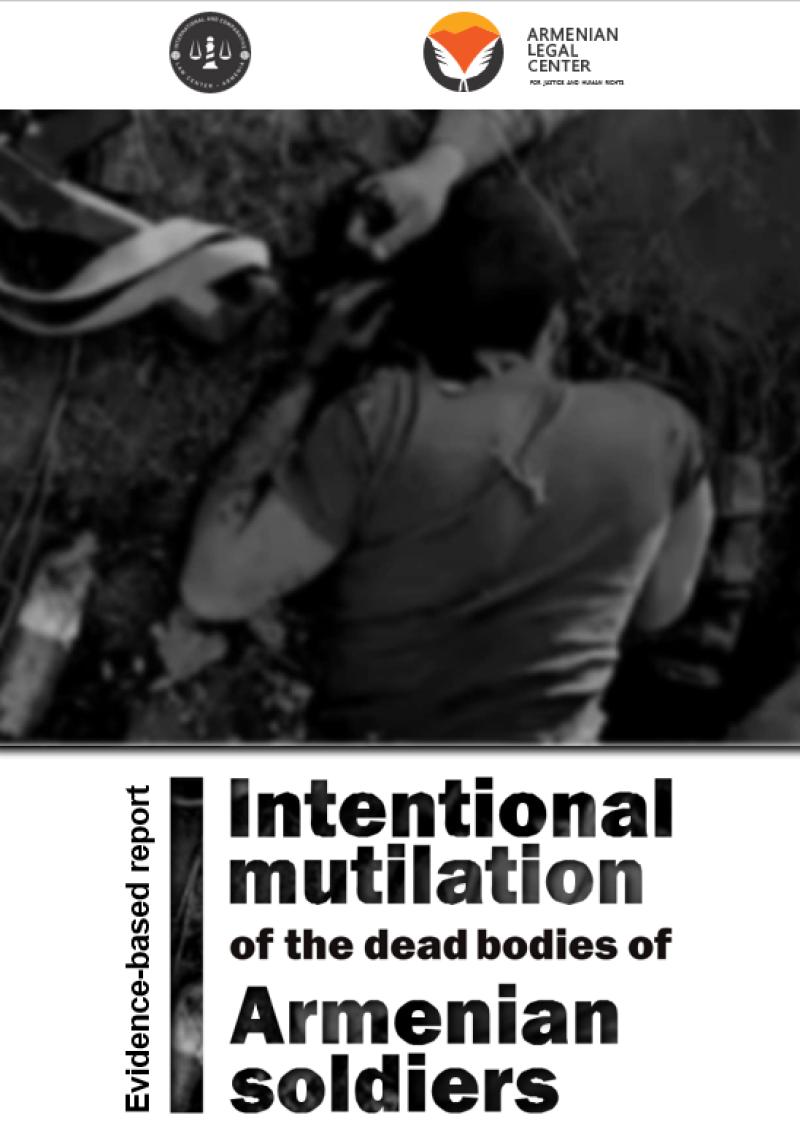
Report on the Cases of Intentional Desecration of the Bodies of Soldiers of the Tsor Military Unit
Warning: The report contains sensitive photo materials of humiliated body parts of fallen Armenian soldiers
Article 3 of the European Convention on Human Rights prohibits torture and degrading treatment: "No one shall be subjected to torture or to inhumane or degrading treatment or punishment." Article 1 15 of the same Convention clarifies that torture, inhumane or degrading treatment, and punishment are absolutely prohibited even in times of war or any other public emergency.
However, during and after the 44-day war, the bodies of Armenian servicemen were desecrated and mutilated by Azerbaijani servicemen to the point of being completely unrecognizable. From time to time, photos and videos would appear on social media networks showing Azerbaijani forces disrespecting the bodies of Armenian soldiers. There is evidence of hands and ears being cut off, stabbing, hitting, burned bodies, and more. These images were targeted at social media users, particularly the family members of those appearing in the videos or photos.
"The Center for International and Comparative Law", in collaboration with "The Armenian Center for Justice and Human Rights", has prepared a fact-based report on the intentional desecration of the bodies of Armenian soldiers of the "Tsor" military unit's D20 artillery division. During the 44-day war, in mid-October 2020, Armenian soldiers of the Tsor military unit's D20 artillery division found themselves surrounded by Azerbaijani forces in Juvvarlu. This attack caused a panic among the Armenian servicemen, who tried to defend themselves by all means possible. During the battle, some Armenian servicemen left the fire zone and retreated to the rear, but 20 soldiers were forced to engage in combat and were killed. Their bodies remained on the battlefield. Nine bodies were recovered on December 1, 2020, after the trilateral statement. The other 11 bodies were handed over by Azerbaijan to the Armenian side on November 2, 2021, a year after the war.
Point 8 of the November 9 trilateral statement stipulates that "The Parties shall exchange prisoners of war, hostages and other detained persons, as well as the bodies of the dead." However, Azerbaijan did not fulfill its obligation and did not properly return the bodies of the Armenian soldiers. The desecrated and unrecognizable bodies of the 11 fallen soldiers of the Tsor military unit were returned to their parents and relatives only a year after the signing of the ceasefire statement.
The report emphasizes that the desecration of the bodies of Armenian soldiers and their display is tantamount to degrading treatment of the family members and relatives of the fallen soldiers. It also notes that the prolonged uncertainty and the inability to properly bury the bodies have affected the right to personal and family life of the relatives. This report aims to present the violent acts of desecration committed by Azerbaijan, which are tantamount to human rights violations.
The report presents in tabular form what remains of the body parts that were handed over to the family members and relatives of the fallen soldiers of the Tsor D20 artillery division. The report includes separate examples with accompanying photographs showing that the bodies of fallen servicemen were fully intact, meanwhile only fragments were handed over to the parents. Additionally, videos circulated on social media networks indicated that the bodies of the fallen soldiers were intact, not dismembered, and that the fatal injuries sustained did not lead to the destruction of the corpses.
The evidence presented in this report clearly shows that the bodies of Armenian soldiers of the Tsor military unit's D20 artillery division were subjected to intentional desecration by Azerbaijani soldiers. The moral suffering of the relatives and family members of the Armenian soldiers has reached a level and nature that differs from emotional distress and is a serious violation of human rights. The fact that relatives were unable to properly bury the bodies of their loved ones for a long time caused them continuous torment and moral suffering, which is tantamount to an infringement on their personal and family life.
The family members and relatives of the deceased soldiers were waiting to bury the bodies in accordance with their personal and religious beliefs, but a year later they were given unrecognizable remains, which caused psychological stress among the relatives.
